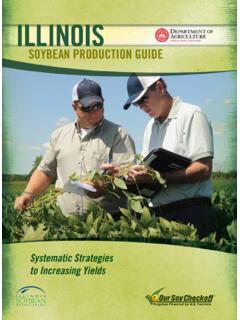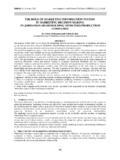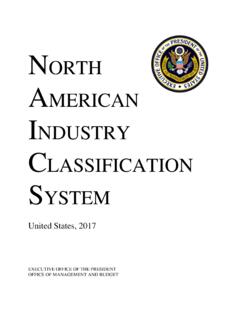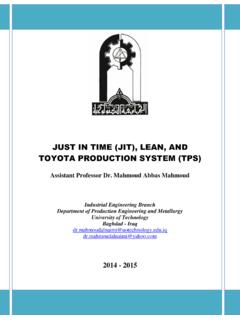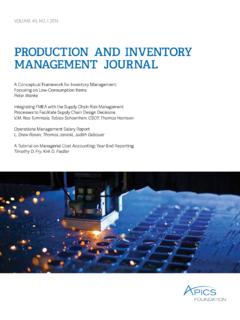Transcription of Introduction to the Toyota Production System (TPS)
1 1 Introduction to the Toyota Production System (TPS) GutowskiCOST VS DEFECTS2 Three Major Mfg Systemsfrom 1800 to 2000180019002000 Machine tools, specialized machine tools, Taylorism, SPC, CNC, CAD/CAM Interchangeable Parts at ArmoriesMass Production at FordToyota Production System31980 s OPEC oilembargo drivesup fuel prices,Japanimports smallcars with increasedfuel mileage4 Consumer Reports5 How we learned about TPS Quality of cars -but not right away Pilgrimages -Hayes, Wheelwright, Clark Joint ventures Japanese NA operations-Georgetown.
2 KY Japanese sages-Ohno, Shingo, Monden American translation- Lean , J T. Consulting ,..6 Toyota Production System Development History -Taiichi Ohno30 years of development 1945 to 19757 Translation: there is no Silver Bullet Technology .This is more System &management ON THE TOYOTAPRODUCTION System ;Taiichi Ohno, The Toyota ProductionSystem Productivity Press 1988 Shigeo Shingo, A Study of the ToyotaProduction System Productivity Press1989 Yasuhiro Monden, Toyota ProductionSystem , 2nd Ed 1983 Hayes, Wheelwright and Clark, Dynamic Manufacturing Free Press1988 Womack and Jones, Lean Thinking Simon and Schuster, 1996 Spear & Bowen, The DNA of the TPS HBR 199919909 Performance Observations Early observations of reliability.
3 After some initial start-up problems IMVP got actual factory level data 1980 s defect counts direct labor hours for assembly level of automation10 Summary of Assembly Plant Characteristics, Volume Producers, 1989 (Average for Plants in Each Region)11 Cost Vs DefectsRef. Machine that Changed the World Womack, Jones and Roos12 Cost Vs AutomationRef. Machine that Changed the World Womack, Jones and Roos13 History of the Development of the Toyota Production System ref; Taiichi Ohno19451975inventoryset-upcellsAndon14 Ref Yasuhiro Monden15 Basic Goal To reduce cost by - Elimination of waste Excessive Production resources Overproduction Excessive inventory Unnecessary capital investment Respect for peopleSee Toyota Production System , Yasuhiro Monden16 Simulation of a 20 machine, 19 buffer (cap = 10 parts) Transfer line.
4 Each machine with one minute cycle time could produce 4800 parts per week. MTTF 3880 minutes, MTTR 120 minutes. See Gershwin p63-64 Zero buffer bufferAve (3249 sim, 3247 analy)Perfect machines, bufferN* 240 parts17 Buffer capacity Vs MTTR MTTR = 120 minutes N* ~ 2 x 120 x 1 part/minute = 240 240 x 19 buffers = 4560 (~ one week) There must be a better way!CHANGE THINKING, REDUCE VARIATION18 What causes variation? Quality issues Delivery time issues Unavailable resources issues19 What causes variation? Quality issues Check quality, prevent propagation Delivery time issues Just in Time, smooth flow, mix models, standard work Unavailable resources issues Flexible machines and cross trained workers20 Quality Issues Make quality problems obvious Error checking (Pokeyoke), Pull System Reduce WIP, which hides problems Stop the line Fix it now Cooperative problem solving21 Delivery Time Issues Kanban card.
5 Type & quantity needed Smooth Production Takt time = available time/demand Standardize work Reduce set-up Design machine layout -TPS cells Autonomation -autonomous defect controlMonden22 Unavailable Resource Issues Fast set up Single Minute Exchange of Dies (SMED) Flexible (general purpose) machines Toyota Cells Cross-trained work Monden claims that the word autonomation comes from the Japanese word Jidoka. which has two meanings, the first is automation in the usual sense, to change from a manual process to a machine process.
6 The second meaning is automatic control of defects . He says this is the meaning coined by Toyota . This second meaning is sometimes referred to as Ninbennoaru Jidoka, which literally translates into automation with a human mind. Monden goes on to say that although autonomation often involves some kind of automation, it is not limited to machine processes but can be used in conjunction with manual operations as well. In either case, it is predominantly a technique for detecting and correcting Production defects and always incorporates the following devices; in mechanism to detect abnormalitiesor defects; a mechanism to stop the line or machine when abnormalities or defects occur.
7 When a defect occurs, the line stops, forcing immediate attention to the problem, an investigation into its causes, and initiation of corrective action to prevent similar defects from occurring Reference; Yasuhiro Monden, Toyota Production System , 24J T. Black s 10 StepsRef; JT. Black Factory with a Future 19911. Form cells2. Reduce setup 3. Integrate quality control4. Integrate preventive maintenance5. Level and balance6. Link cells KANBAN7. Reduce WIP8. Build vendor programs9. Automate10. Computerize25J T.
8 Black 1, CellsSequential operations, decouple operator from machine, parts in families, single piece flow within cell2. Reduce SetupExternalize setup to reduce down-time during changeover, standardize set-up26 TPS CellToyota Cell, one part is produced for every trip around the cellJ T. Black27J T. Black 3, quality controlCheck part quality at cell, poke-yoke, stop Production when parts are bad, make problems visible, Andon -info about work being Integrate preventive maintenanceworker maintains machine , runs slower, operator owns Production of part28J T.
9 Black 5, and balanceProduce to Takt time, reduce batch sizes, smooth Production flow, produce in mix to match demand6. Link cells-KanbanCreate pull System Supermarket System that indicates the status of the system29 Balancing and Leveling Balanced line:adjust process time for smooth flow Takt time Leveled Line:each product is produced in the needed distribution. AABCA30 Pull System at the Supermarket31 Pull Systems-The orders arrives at the end of the line and are pulled out of the System . WIP between the machines allows quick completion.
10 System stops when there are no orders Disruptions are obvious Product differentiation at the end32 Push Systems Order (from centralized decision process) arrives at the front of the System and is produced in batches of size B .Process time at each step may not be = T3 Time = T2 Time = TNTime = T1 Time = T. Black 7, WIPMake System reliable, build in mechanisms to self correct,reduceinventory8. Build Vendor programPropagate low WIP policy to your vendors, reduce # of vendors, make on-time performance part of expectation34 TPS Cell: flow (part separate from worker) work (highly specified) rate flexibilityRef: J T.











